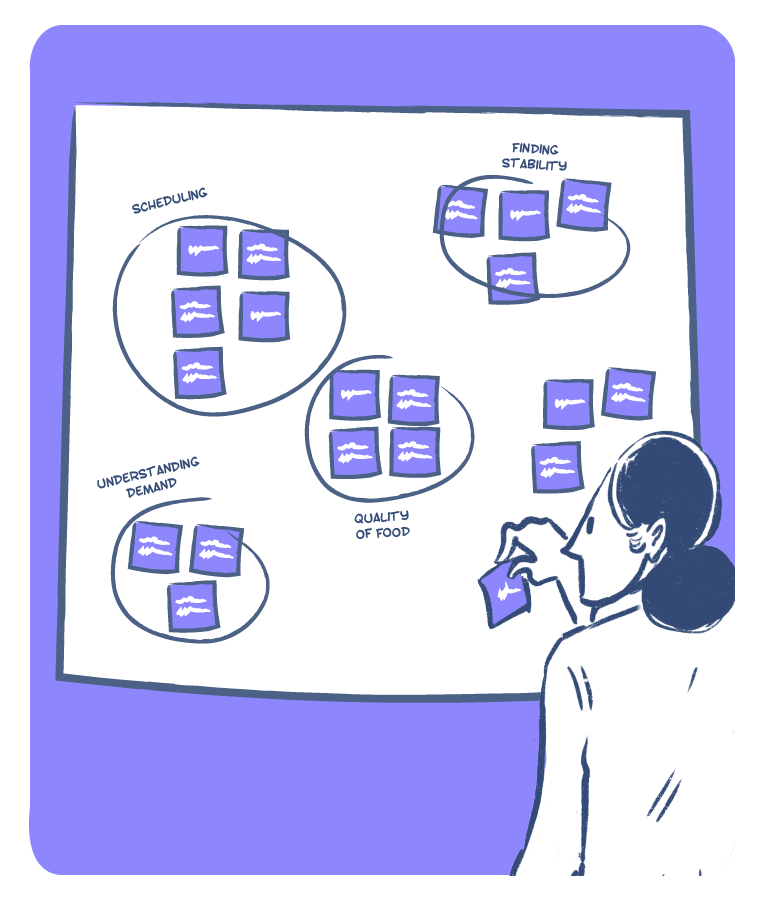HUMAN CENTERED DESIGN | DEFINE
Affinity Mapping
60 Min
Affinity Mapping is a synthesis tool aimed at identifying insights from qualitative research, observations and findings. It involves organising key data points into clusters (called Affinities) that are logical, thematic, and consistent, and then discussing the clusters so that clear learnings and insights can emerge.
USE CASES
- Organise research findings into buckets of information and themes that make sense.
- Map emerging learnings and insights from patterns of information.
LIMITATIONS
While Affinity Mapping is a great way to look for patterns and insights, it can be an exhausting exercise - What observations and data points should you consider? Are the clusters distinct enough? How macro or micro should the clusters be? What is the relationship between clusters? etc. Not all questions can be answered, and some can lead to confusion and inconclusive debate. It is important for teams to look at the exercise as something that requires iteration.

